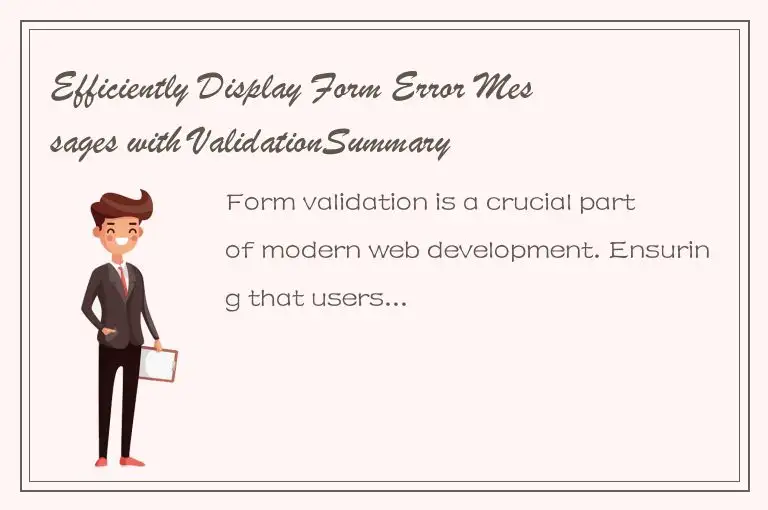Form validation is a crucial part of modern web development. Ensuring that users enter valid information is important for maintaining the integrity of the data being entered into a web application. Without proper validation, malicious or erroneous data can be submitted, leading to errors or even security risks.

In order to provide users with feedback on validation errors, web developers often turn to displaying messages or indicators. One popular method for displaying error messages is to use the ValidationSummary control in ASP.NET. This control provides a simple and convenient way to display all validation errors in one place, making it easier for users to fix mistakes and complete the form successfully.
The ValidationSummary control works by collecting all error messages from ASP.NET validation controls on the page and displaying them in a single location. This means that if a page contains multiple validation controls, such as RequiredFieldValidator or RegularExpressionValidator, the ValidationSummary control will display all error messages in one place when the form is submitted.
Using the ValidationSummary control is relatively simple. First, it needs to be added to the page where validation is taking place. This can be done by dragging and dropping the control from the toolbox onto the page in Design view, or by manually adding the control to the page's markup.
Next, the ValidationSummary control needs to be configured. This involves setting properties such as DisplayMode and HeaderText, which determine how the error messages are presented to the user. The DisplayMode property controls whether error messages are displayed as a list, bullet points, or as a single message. The HeaderText property sets the text that appears above the error messages, helping the user to understand what the ValidationSummary is displaying.
Once the ValidationSummary control has been added to the page and configured, it will automatically collect and display error messages from all validation controls on the page. This can greatly reduce the amount of code needed to display error messages, making it easier to maintain and update forms over time.
In addition to its simplicity, the ValidationSummary control also provides a number of other benefits. For example, by displaying all error messages in one place, it can help to minimize visual clutter on the page, making it easier for users to focus on the errors that need to be corrected. It can also be used to provide additional information, such as links to help documentation or contact information for technical support, helping to ensure that users are able to resolve validation issues quickly and easily.
Of course, there are also some potential drawbacks to using the ValidationSummary control. For example, if a page contains a large number of validation errors, the ValidationSummary control can become quite lengthy, making it difficult for users to find the specific errors they need to correct. Similarly, if the ValidationSummary control is not configured correctly, it may not provide enough information to users, leading to confusion and frustration.
To avoid these issues, it's important to take the time to properly configure and test the ValidationSummary control before adding it to a page. This can involve adjusting settings such as the DisplayMode and HeaderText properties, as well as testing the control under a variety of different scenarios in order to ensure that it works as expected.
Overall, the ValidationSummary control is a powerful tool for displaying form error messages, allowing web developers to efficiently and effectively communicate validation errors to users. By taking the time to properly configure and test this control, developers can ensure that their web applications are easy to use, reliable, and secure.




 QQ客服专员
QQ客服专员 电话客服专员
电话客服专员